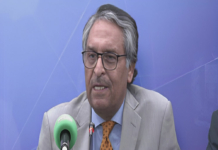Pakistan owns a vast variety of valuable things and Basmati rice is one of them. It is grown in Indo-Pak subcontinent. Basmati rice is a premium grain crop as compared to non-basmati rice; therefore its premium rate is also very high as compared to non-basmati rice and it attracts traders and businessman to buy from the growers at high price.
It will be not wrong if I say that Basmati rice is a cultural heritage of Pakistan and basmati 370 was the first registered seed variety of basmati crop developed by Rice Research Institute Kala Shah Kaku in 1933. The country is the fourth largest exporter of the rice in the world after India, Thailand and Vietnam. Pakistan exports more than four million tonnes of rice to different parts of the world and a major share is exported to the European Union.
If I talk about the high basmati rice growing areas, the district Narowal, Sheikhupura, Sialkot, Sargodha, Lahore, Gujranwala, Mundi Baha-ud-din, Nankana Sahib, Hahizabad, Jhang and Toba Tek Sing are on top of the list.
But our cultural heritage is in hot waters after a claim filed by India to the European Union. Pakistan has challenged the claim of India for basmati rice, and it is accepted by geographical indication. European Commission has granted three-month time to both the countries for consultation, which expired. Another period of three months was given, which expired on 10th September.
Five years’ export data of basmati rice indicates that there was a significant increase of export of basmati rice except 2020-21 where export from Pakistan decreased due to COVID-19 pandemic. European Union is the major market of Pakistan’s basmati rice. Therefore, Pakistan must use all its diplomatic relations and legal aspects before European Commission to safeguard the interest of Pakistan, as well as of its farming community.
Written by Laeeq Mughal | Lahore





